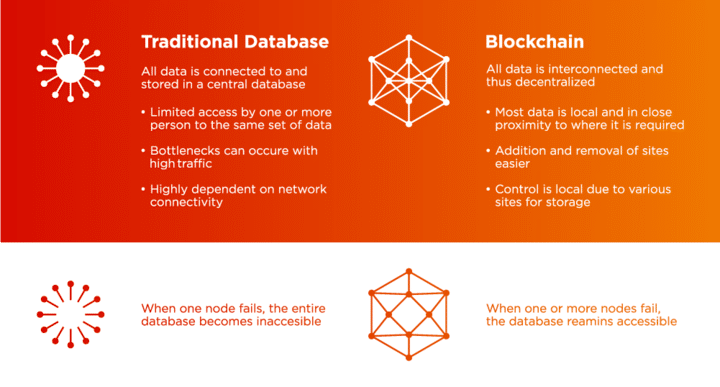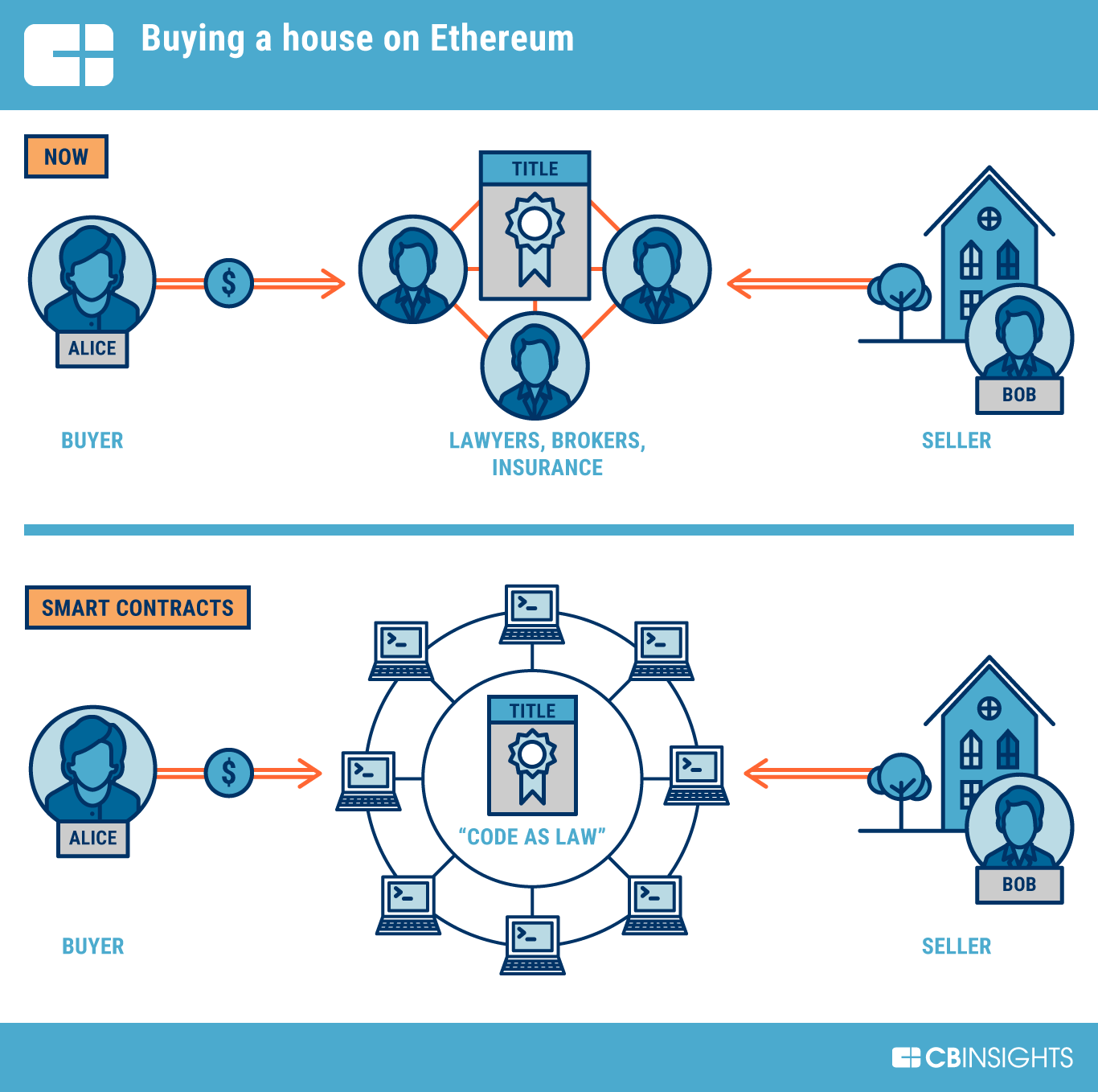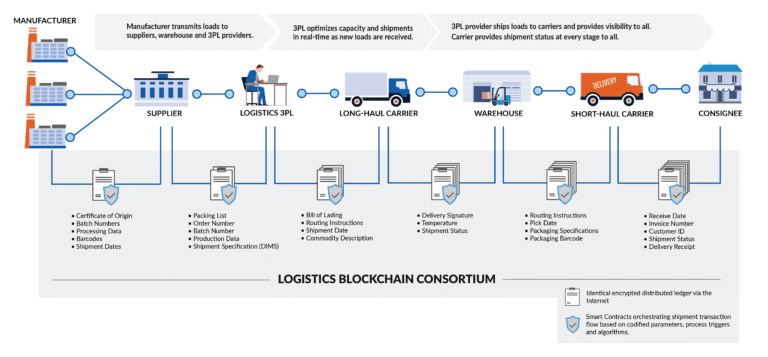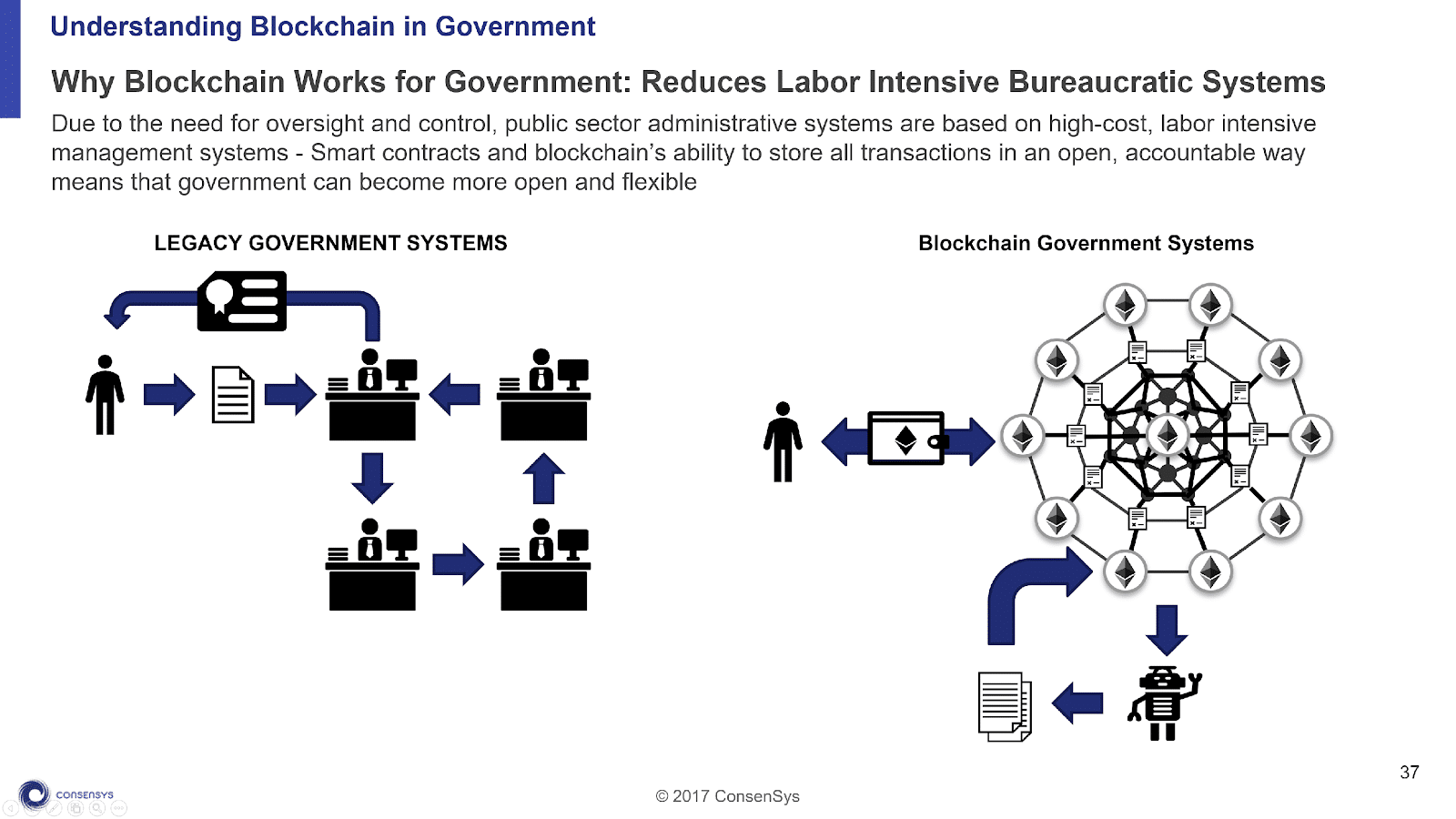Blockchain may have become a buzzword, but it has huge app development potential. It’s used in crypto, finance, and more. Who knows what’s next? Combined with the equally-buzzy AWS cloud computing-as-a-service, a whole new spectrum of apps are possible.
As certified AWS partners and blockchain developers, we’ve put this post together to clarify how developers think about blockchain and AWS in app development. We’ll guide you through blockchain, how it works with AWS, and what it’s useful for.
What is Blockchain?
Blockchain is a new technology that changes how we verify data. Instead of having a bank or central database verify the data, a network of individual computers does it.
Don’t understand? That’s okay! This quick video explains how it works in a way anyone can understand.
Overall, blockchain stores and verifies data in many locations instead of one. It works for cryptocurrency, ledgers, contracts, and more. If something needs to be verified, blockchain can help.
Blockchain: groundbreaker or buzzword?
Too many people throw around the word “blockchain” to make their software sound fancier. Don’t do that. Blockchain is extremely useful, but it’s not for every project. If you try to implement blockchain where it doesn’t make sense, it just makes you look foolish.
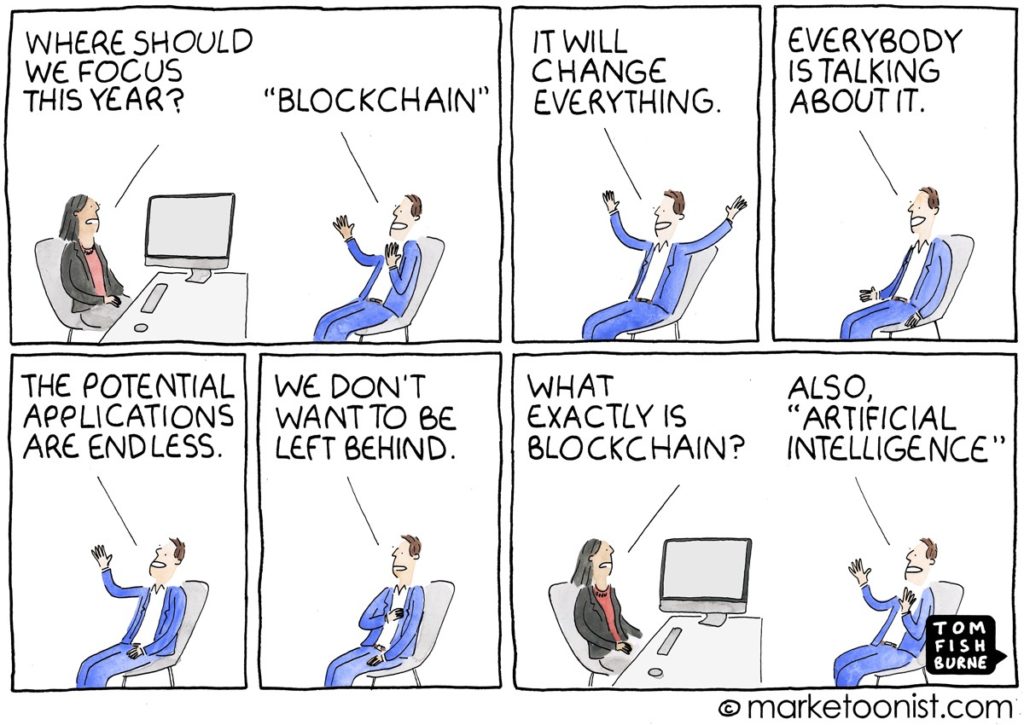
Instead, be specific. Does the app use the Ethereum network (it probably does)? Mention Ethereum, not blockchain. Maybe it uses Polkadot. Say Polkadot, not blockchain. The best way to avoid using a buzzword is to be specific. It shows you’ve thought it through and know what you’re talking about.
Benefits of blockchain
What makes blockchain so great? It’s decentralized. Because it doesn’t rely on a central computer, it’s resistant to a lot of damage. If one computer fails, the system stays up.
More importantly, the data (whether it’s a cryptocurrency, financial data, or a ledger) is very hard to corrupt. To compromise data in a centralized system, someone just needs to change what’s in the central database. However, because there’s no central database on a blockchain network, a single computer would have to override the entire network, which is much harder to do.
Decentralizing the cloud with AWS
How does a company get these benefits? After all, blockchain is hard to set up, and apps aren’t easy to develop.
One strategy that keeps growing in popularity is building AWS apps on blockchain. AWS — one of the biggest, most efficient, and most powerful cloud-based infrastructure companies around — offers a few solutions for deploying blockchain on a cloud-based app. Here’s how developers get that to work.
AWS Blockchain Development: the three magic methods
There are a few different ways to build a blockchain app on AWS. You don’t need to know all the technical details — that’s your developer’s job — but understanding just a bit will help your developers understand your goals a bit better.
AWS Blockchain Templates
AWS offers open-source templates for apps built on blockchain. They deploy the network on an ECS cluster or an EC2 instance running Dockers. In other words, the template links the app and the network.
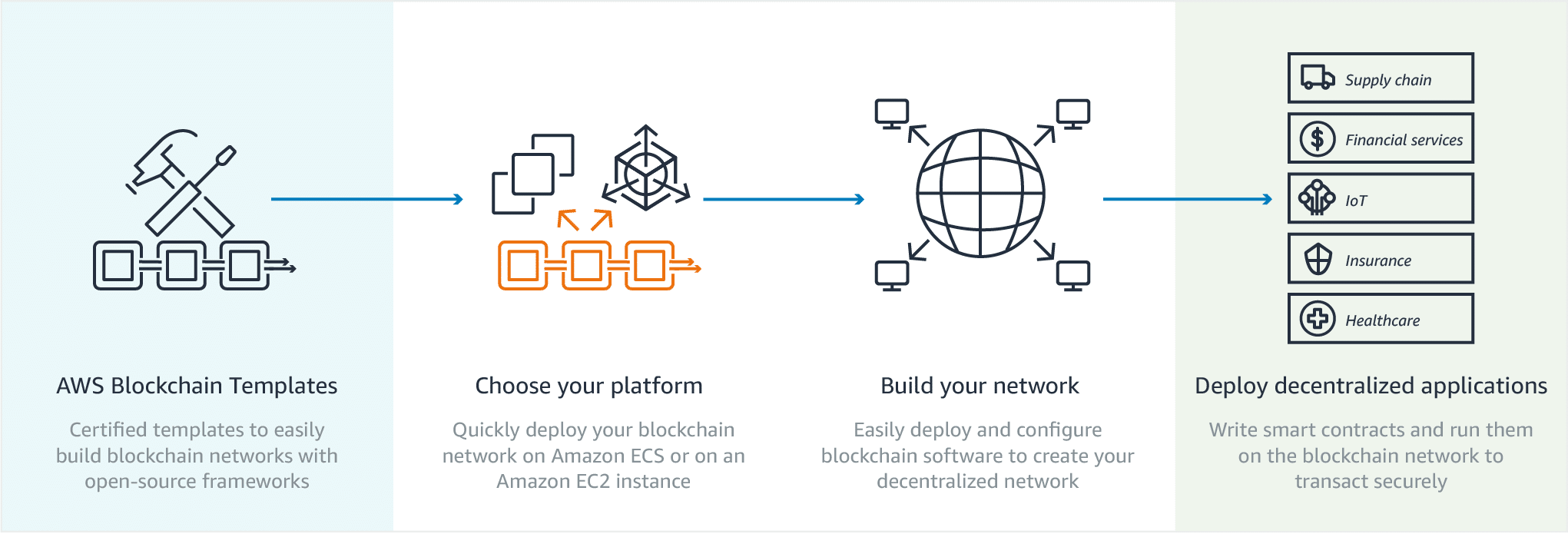
AWS offers two different templates: Blockchain for Ethereum and Blockchain for Hyperledger Fabric
- Blockchain for Ethereum uses the incredibly popular and powerful Ethereum Network to power public blockchain applications. This template is by far the most popular method for building blockchain apps on AWS
- Blockchain for Hyperledger Fabric lets you add permissions and access controls to the network. Use it for private blockchain networks.
For most blockchain applications, Ethereum is perfect. However, there are a couple more options that may be useful in certain settings. You lose some decentralization but gain other capabilities.
Quantum Ledger Database
Amazon’s Quantum Ledger Database (QLDB) is a managed ledger database that chains together changes in an append-only journal.
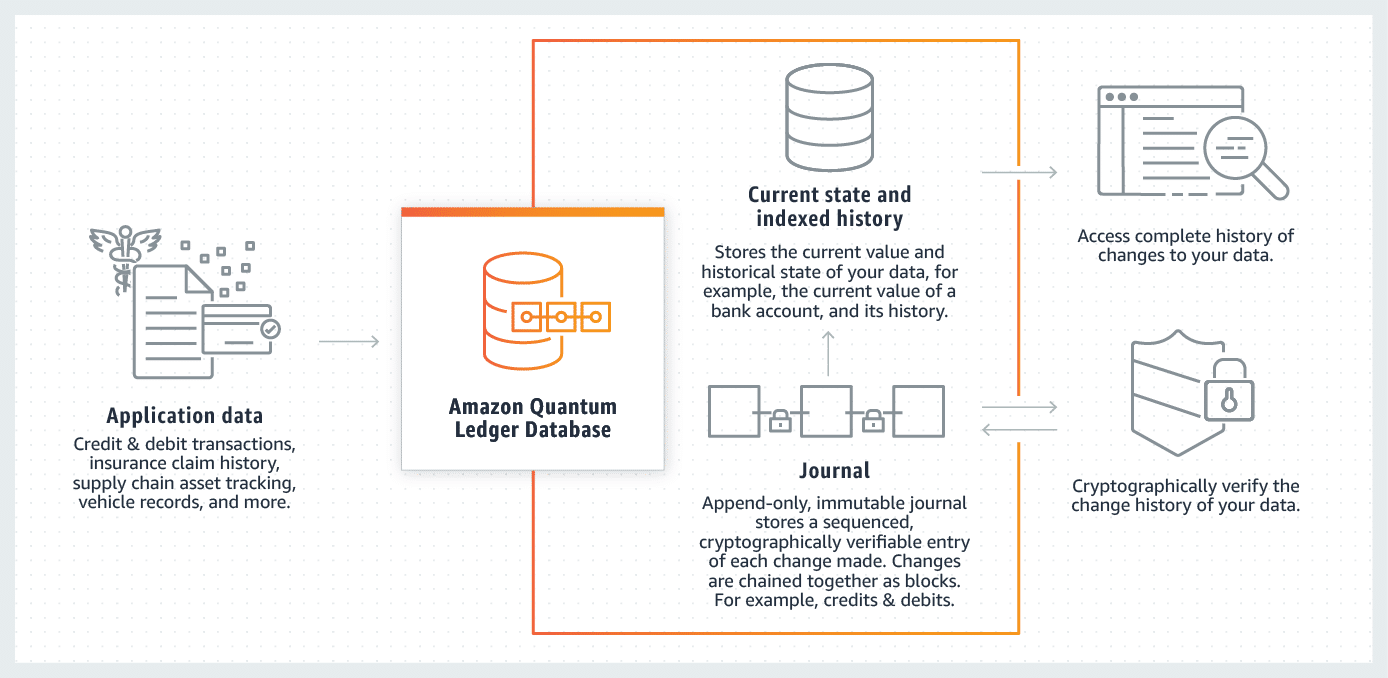
Unlike Ethereum, it’s managed by AWS, meaning it isn’t fully decentralized. This doesn’t mean all the benefits are lost. Data in the ledger remains unchangeable and secure, and the database is completely managed to save time and money. For ledger applications, it’s a great fit.
Amazon Managed Blockchain
Amazon Managed Blockchain is a fully-managed tool for maintaining a public or private blockchain network on Hyperledger Fabric or Ethereum. Developers can manage networks with single API calls.

Again, it is managed by AWS, so some level of decentralization is lost in the process. However, architectural decentralization remains: data is still verified across many different devices in a non-changeable way. Thus, many of the security and reliability benefits remain completely intact.
Because of these security benefits and more, blockchain is an amazing technology with lots of potential in app development.
But no matter the method, blockchain on AWS has many uses.
Uses of Blockchain on AWS
Blockchain has many uses in app development. These are some of the most common ways developers use the technology.
Cryptocurrency
Blockchain was invented for Bitcoin. It’s the core of any decentralized currency, and it continues to be a major source of innovation.

Most blockchain apps use Ethereum: an open-source blockchain platform. Ethereum also hosts the ETH cryptocurrency, which is one of the largest cryptocurrencies on the market. By definition, any cryptocurrency needs blockchain to function.
Decentralized finance (DeFi)

Decentralized finance (better known as DeFi) uses blockchain to circumvent the “middlemen.” Lenders and borrowers connect directly and the transaction is verified and recorded by the network.
Smart Contracts
Why enforce contracts through a central authority when a decentralized entity can do it just fine? Smart contracts use blockchain to enforce and verify contracts in real-time.
These contracts are visible to everyone and completely transparent, which adds extra accountability.
Digital ledgers
Big logistics companies like DHL and Maersk are using blockchain to keep track of supply chains. It keeps the ledger transparent and secure to build trust and save money in the transportation and shipping industries.
Theoretically, a logistics blockchain keeps the data visible and secure for better tracking and decision-making.
Transparent government documents
The government is all about transparency for the people, and many states are using blockchain to keep data visible to the public. This technology is especially useful for verifying documents.
Although it’s mostly only implemented on a local level, blockchain has huge promise in both the public and private sectors.
Phoenix AWS Blockchain Developers
Need talented tech gurus to build your AWS blockchain app? Fyresite’s crypto fanatics and blockchain bosses are certified in AWS app development. With a little elbow grease, we can make your cloud-based AWS blockchain app a reality. Reach out with the contact form below.
